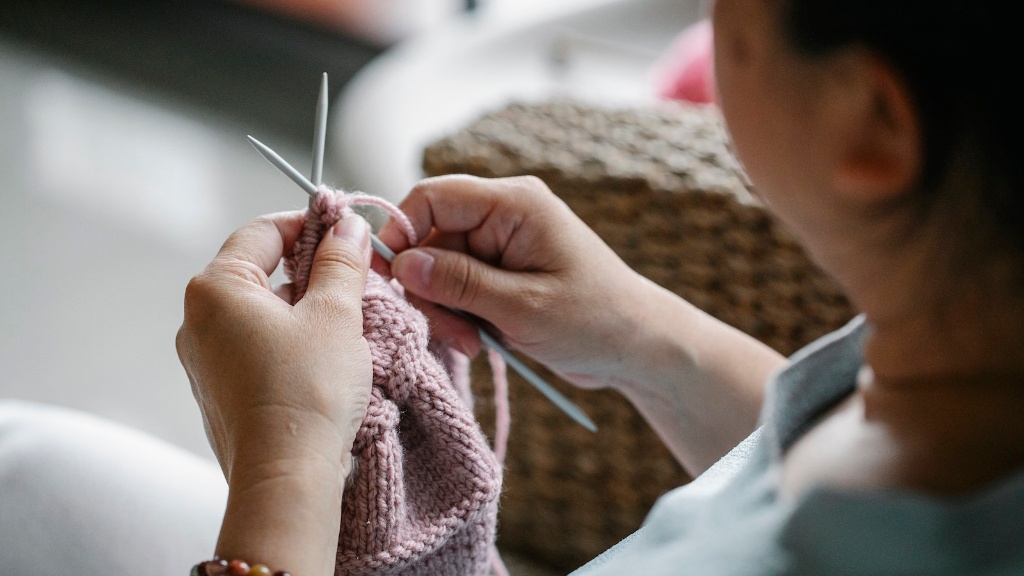Professional Tips for Hemming a T-Shirt
Hemming a t-shirt might sound like a difficult task, but with the right guidance and a few simple tips, it can be fast and easy. A well-hemmed t-shirt can be the perfect finishing touch to your look, with the right length and fit.
Here’s what you need to know before starting to hem your t-shirt. First, gather the right materials. For basic t-shirt hemming, you’ll need your t-shirt, thread, a sewing machine and a pair of scissors. Make sure you select your thread color carefully – it should match the color of your fabric as closely as possible. You can also use a contrasting color for an interesting effect.
Once you have your materials, decide how much you’d like to hem your t-shirt. Some people prefer to just take the bottom edge up one or two inches, while others are happy to shorten the length significantly. Whatever you decide, you’ll need to mark the fabric accordingly. Measure and mark the length you’d like to hem your t-shirt with a fabric marker so that you have a visible guide while sewing.
Now, it’s time to get your sewing machine ready. On a clean, flat surface, place your t-shirt with the hem facing up. Fold the fabric up so that the top of the fold is marked, and press it with a warm iron to smooth it down. Once the fabric is pressed, you can begin to stitch. Start at the side seams and sew around the hem all the way to the other side.
Be sure to keep your seams tight. This will prevent any gaps between the sewn fabric and the edge of the t-shirt. When you get to the opposite side, tie off the thread and cut away any excess fabric. Lastly, press the hem with a warm iron again, to make sure it stays in place.
With the right equipment, some guiding tips, and a bit of patience, even a beginner sewer can hem a t-shirt. Learning how to use a sewing machine is a great way to take ownership of your wardrobe, and it can save you a lot of money.
Basic Stitches to Master
If you’re just starting to explore the world of sewing, the basic stitches to learn are the running stitch, the gathering stitch and the hem stitch. The running stitch is the most simple – it’s essentially just a regular forward and backward pattern. The gathering stitch is typically used for gathering fabric such as shirring or tucking. Finally, the hem stitch is the one you’ll use to hem you t-shirt. It’s essentially a blanket stitch, but with a looser loop.
The key to a great hem stitch is to make sure the loop is tight enough to secure the fabric without being too tight so that it creates puckers in the fabric. It’s a good idea to practice on a scrap piece of fabric before you start on your t-shirt. This will help you get a feel for the tension you need to maintain while stitching.
If you’re having trouble with the tension, try adjusting the tension knob. Turning it to the left (counterclockwise) will decrease the tension, while turning it to the right (clockwise) will increase it.
When you’re done stitching, be sure to tie off the end with a knot to secure the thread. Otherwise, the thread could come undone, and your hem could come unraveled.
Taking Care of Your Sewing Machine
In order to get the best results from hemming your t-shirts, it is important to take good care of your sewing machine. After every few uses, wipe it down to keep it from accumulating dust and lint. You can also lubricate the moving parts – the bobbin, needle, and feed dog – with a drop of machine oil. This will prevent the machine from getting stuck or jammed.
It is also important to keep your needles in good shape. Using the wrong type or a blunt needle can result in poor-quality stitching, or even cause damage to your fabric. Be sure to use the correct type of needle for your machine – every machine is different – and be sure to change your needle after a few hours of sewing. This will help keep your stitches looking neat and professional.
Finding Inspiration
Hemming your t-shirts is a great way to stay up to date on fashion trends, and find inspiration for your wardrobe. Search online for tutorials, and check out fashion blogs and magazines to find intricate hems that you can try. With a bit of practice and some patience, you can create unique looks for any occasion.
You can even put your own twist on a classic look, such as adding a ruffle to the bottom of a t-shirt or making a bow hem. If you’re feeling adventurous, you can even try something like a wrapped hem, or a reverse hem to create a unique, contemporary style.
Avoiding Common Mistakes
Even experienced sewers are prone to making mistakes with hemming a t-shirt. One of the most common mistakes is using too much fabric while hemming. This will often result in a bulky, uneven hem that can be difficult to work with. Be sure to keep the fabric as flat as possible while hemming, and use only as much fabric as necessary.
Another mistake is choosing the wrong type of fabric for a t-shirt. Lightweight fabrics, such as rayon and polyester, may be difficult to hem without causing puckers in the fabric. Instead, look for fabrics such as cotton, linen or even wool for a t-shirt.
Finally, be sure to press your fabric after hemming, as this will help keep your hem in place. It’s also important to use the proper amount of tension while stitching – too much tension can cause puckers in the fabric, while too little tension can cause gaps in your seams.
Closing the Seams
Once you’ve hemmed your t-shirt, it’s time to finish the seams. This can be done in a variety of ways, including hand-sewing or using a serger. Using a serger is quick and easy, and it will give your hem a professional look. It’s also a great way to avoid bulky seams.
If you don’t have a serger, you can still achieve a finished seam by hand-sewing. This is a great option if you’d like to add a bit of detailing to your seam, such as a decorative stitch or trim. Once you’ve finished your seams, trim away any excess thread and fabric, and you’re good to go.
Saving Money By Hemming At Home
You don’t always need to spend money to hem a t-shirt. With a bit of practice, you can easily complete the job at home. This can save you time and money in the long run, and it’s also a great way to get creative with your wardrobe.
Learning to hem a t-shirt is a great way to gain confidence in your sewing skills. Once you get the hang of it, it can become second nature. So, grab your materials and get hemming!
Improving Your Technique
To take your hemming skills to the next level, you’ll need to practice. The best way to learn is by doing, so the more you sew the better you’ll get. Each time you stitch, take special care to adjust your tension, keep your seams straight, and check for any marks or puckers.
It can also be helpful to take a sewing class. Here you can learn the basics, as well as more advanced techniques such as pattern-making, embellishing and more. Sewing classes are not only a great way to sharpen your skills, they’re also a great way to make friends and share tips with other sewers.
Keeping Up With Trends
In order to keep up with the newest trends, it helps to do your research. Look for inspiration online, in fashion magazines, and even in movies. This will give you a good idea of what’s popular at the moment, and which styles are timeless. You can also look for tutorials on how to create on-trend hems for your t-shirts.
With the right fabrics, stitches and techniques, you can create stunning hems for your t-shirts that will last for years. As long as you follow these simple tips, you’ll be hemming t-shirts like a pro in no time.





